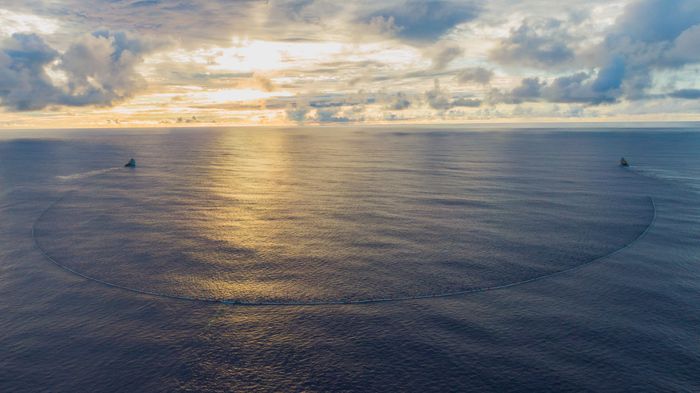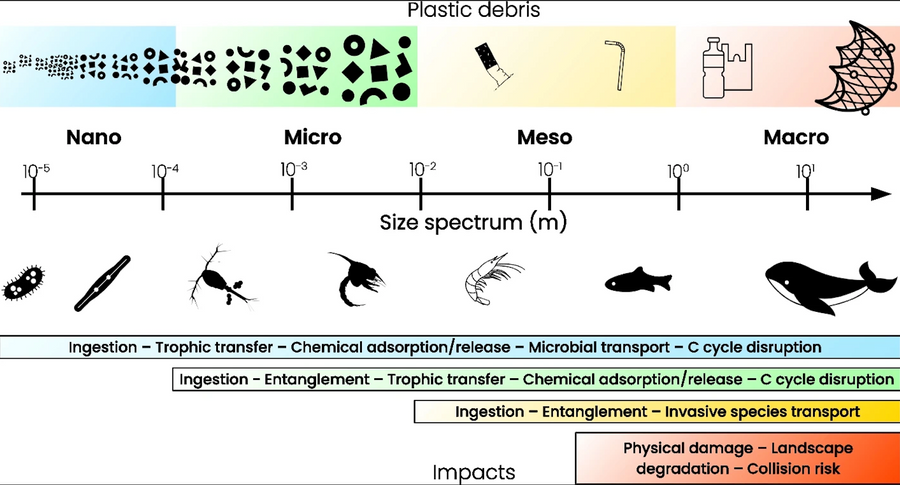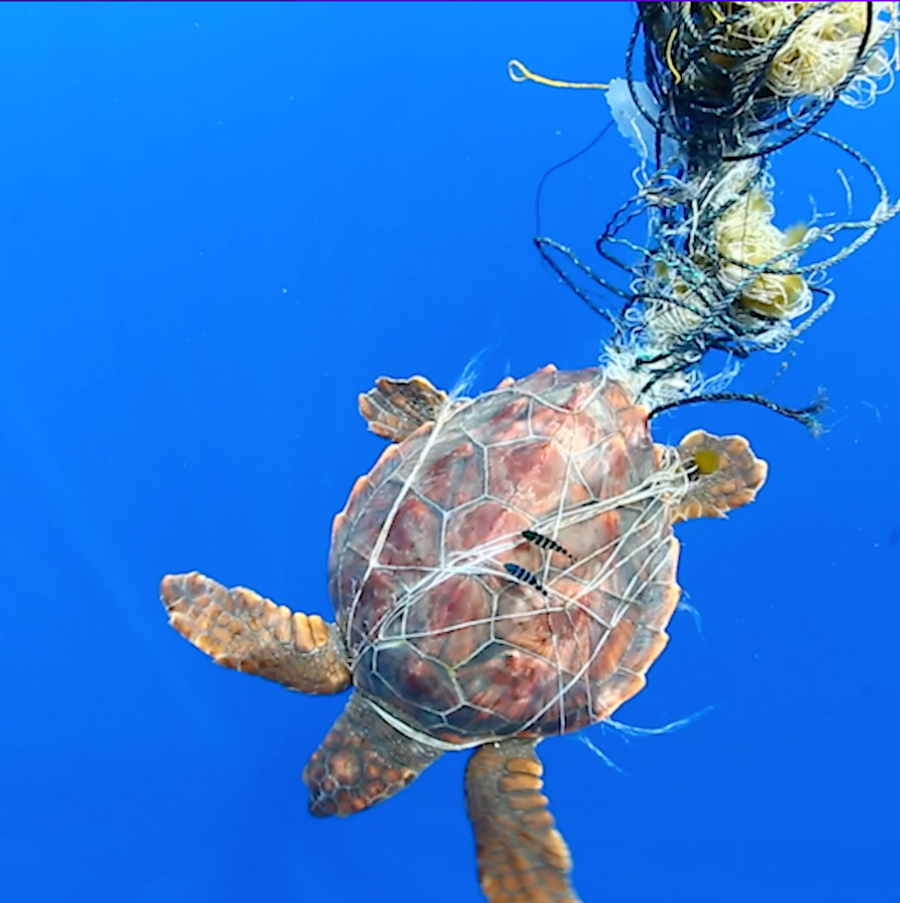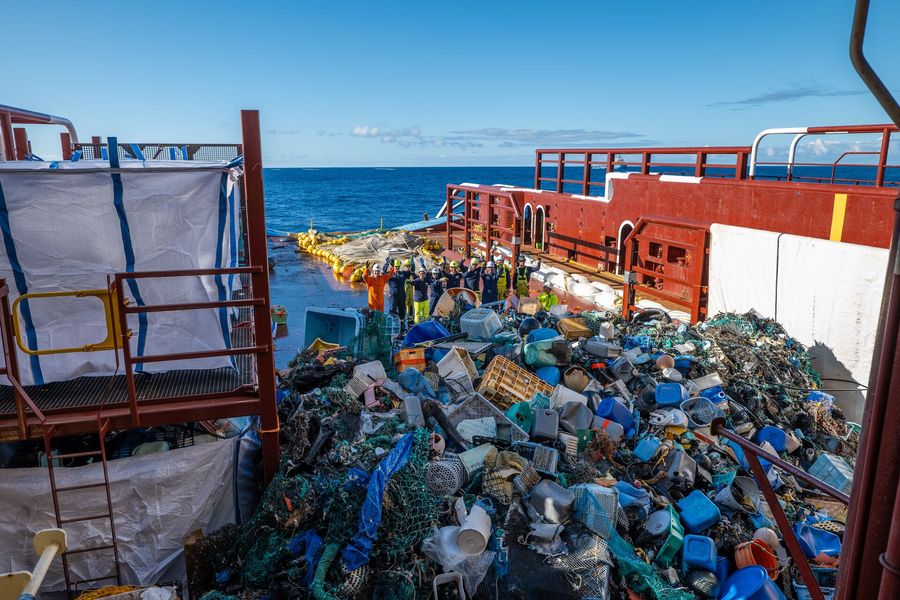
Lasting Damage: Why Cleanup Is Essential To Tackle Microplastics
Back to updatesA new peer-reviewed publication highlights the widespread and lasting harm caused by plastic in the ocean and the impact on marine ecosystems that could last for hundreds of years. We believe it is essential to clean up this pollution as part of a global path towards plastic-free oceans.
Plastic pollution is a complex problem. Over ten years, The Ocean Cleanup has been researching, highlighting, and tackling the ocean plastic pollution problem, and one conclusion is clear: we can only resolve this environmental crisis by working collectively on multiple solutions at global scale.
SOLVING A PLANETARY PROBLEM
To truly rid the oceans of plastic, our global community must do several things. We must make systemic changes to how we produce, consume, and manage plastic. We must also find ways to stop plastic emissions from entering the ocean, and we are pleased to see each of these recognized in the ongoing negotiations for a Global Plastics Treaty. The Ocean Cleanup’s Interceptors are contributing to tackling this problem right now – capturing trash and reducing plastic emissions into the oceans around the world, with over 7 million kilograms of waste extracted so far.
However, stopping plastic emissions will not, by itself, be enough. The plastic floating on the oceans today is already causing damage, is persistent and is not going away by itself, and as larger objects slowly but steadily degrade into microplastics, the harmful effects will only worsen over time.
A new study in the journal ‘Microplastics and Nanoplastics’ discusses the damage caused by plastic pollution and highlights that plastic in the oceans today can continue to affect ecosystems all over the world for decades, likely even centuries.
Leaving it floating out there means accepting this fact and leaving the marine environment to bear the consequences for generations. Reducing emissions alone will do nothing to stop this damage – the only way is to clean it all up while we still can.
MICROPLASTICS: MORE HARMFUL EVERY DAY
While it is undoubtedly essential to eliminate plastic emissions to the environment, this will not be sufficient to address the impacts of so-called legacy plastics that are already in the ocean today (an estimated 100 million kilograms in the Great Pacific Garbage Patch, or GPGP, alone) and for which any preventive actions are already too late. Most plastic pollution arrived into the ocean as larger objects, but each larger object constantly degrades and leaks microplastics into the ocean.
It is critical to understand that the longer a plastic object is in the water, the more harm it will do. There will be more microplastics in the ocean tomorrow than there are today – even if emissions stopped completely and no new plastic pollution arrived into the ocean. The mass of microplastics, and the urgency of the problem, grows every day.
Although microplastics make up only a small portion of the total plastic mass in the ocean, they are disproportionately harmful. Microplastics can spread widely throughout the oceans in a way that larger plastic objects cannot. They can also be ingested by zooplankton, the very base of the marine food web, introducing plastic (and its potentially harmful chemicals) into a global food chain that eventually ends with us.
Of course, plastic does not have to be microscopic to cause harm. Larger plastic objects can impact wildlife through entanglement and the potential release of harmful chemicals into the water. Larger objects can even interfere with human activity, damaging vessels and disrupting commercial shipping. Plastic is harmful at all stages of its lifecycle at sea.
There are now trillions of microplastic pieces in the oceans, and the quantity is going up, not down. If we do nothing to address this problem, this number is expected to increase exponentially. The new study highlights that reducing emissions into the ocean by 80% – a hugely ambitious target – would still lead to the level of microplastics tripling by 2050.
The only chance of stabilizing or reducing microplastic levels is a strategy that includes cleanup alongside emissions cuts.
CLEANUP, EMISSIONS, PRODUCTION: EVERY SOLUTION IS VITAL
The UN Global Plastics Treaty presents an unprecedented opportunity to end plastic pollution. To be effective, the final Global Plastics Treaty must ensure that cleanup is placed as a key priority alongside production control and reduction of emissions. This means cleanup in all forms: ranging from beaches, lakes and regional seas to the vast garbage patches on the high seas, as well as cleanup of land-based trash which will eventually make its way to the oceans.
The Ocean Cleanup has been invited to observe and contribute during these negotiations and is pleased to see that cleanup of legacy plastic is addressed in the Zero Draft published on 4 September 2023, showing the international community’s recognition of this vital part of the solution.
The high seas, where the garbage patches are located, are beyond national jurisdiction, meaning nobody is directly responsible for cleaning them; yet the effects can be felt around the world. Out of sight can often mean out of mind, but it is essential the global community does not overlook this chance.
These garbage patches are stains on our planet and on our shared environmental conscience. The ecological damage caused by legacy plastic afloat on the high seas could be felt for decades to centuries. Negotiators for the Global Plastics Treaty must ensure that cleanup, including of pollution floating on the high seas, is addressed in the final treaty.
Addressing each stage of the plastic pollution problem, upstream and downstream, gives us the best chance to remove this plastic once and for all. All stakeholders must therefore seize the opportunity to ensure support and funding for cleanup all over the world.
By combining our solutions, the world has a unique chance to truly rid the oceans of plastic – together.
INC-3, the third negotiating committee for the UN Global Plastics Treaty, is taking place in Nairobi, Kenya from 13 to 19 November 2023. The Ocean Cleanup is in attendance.







